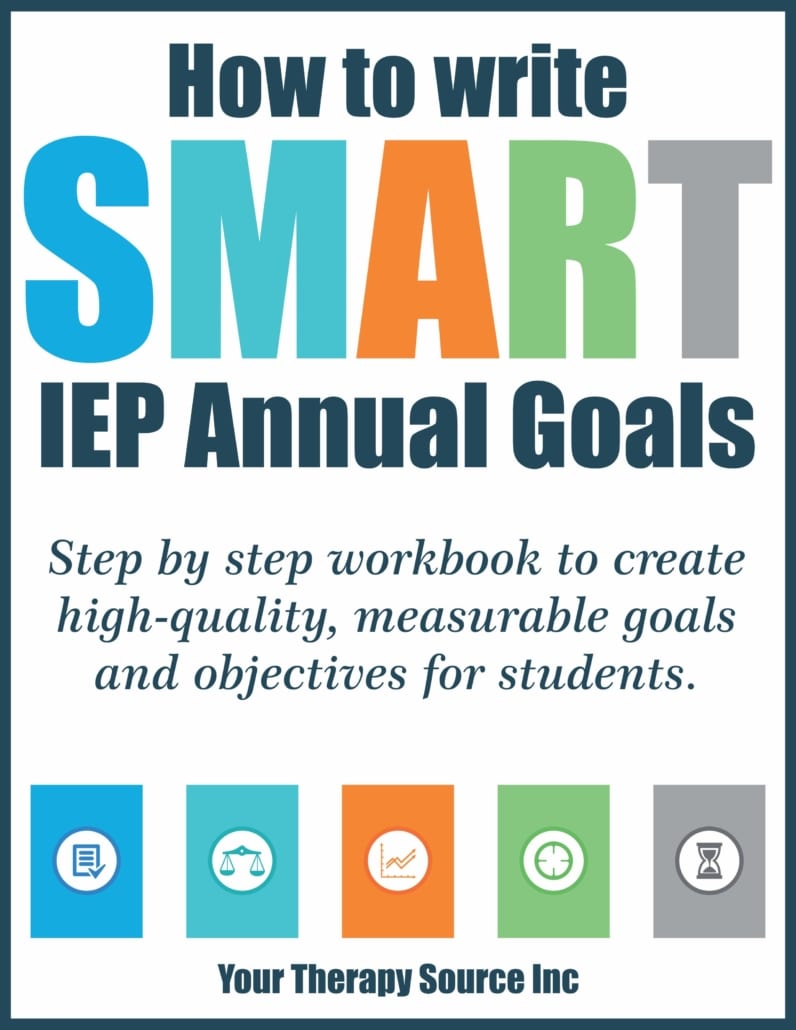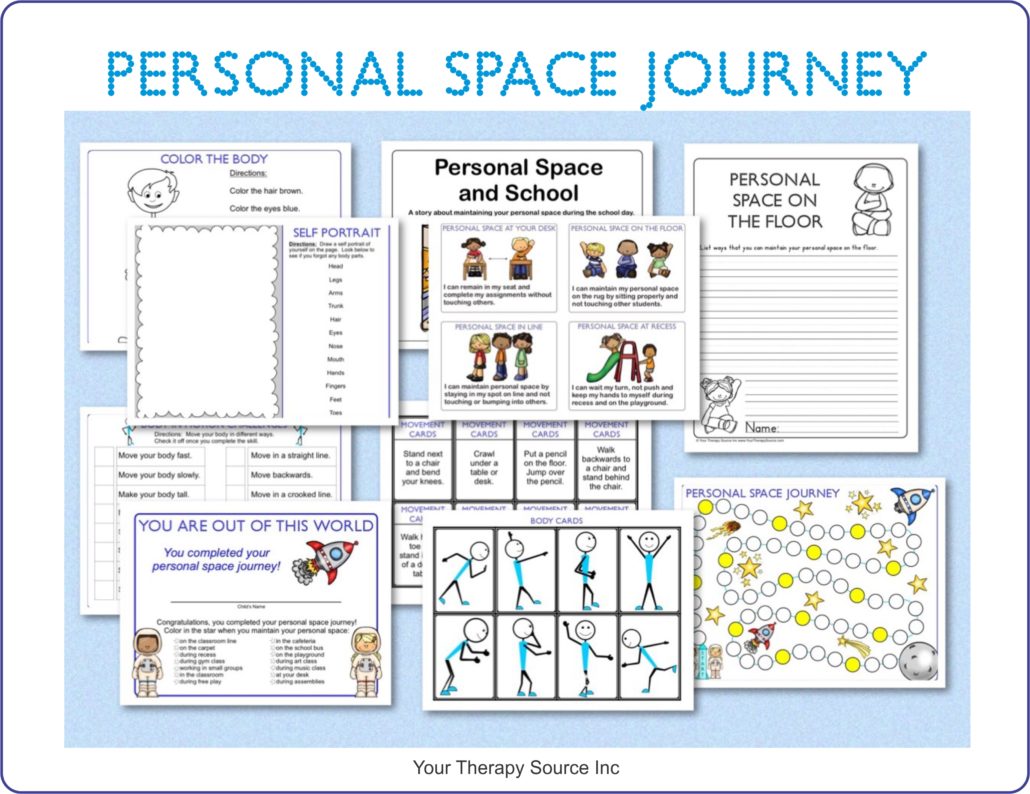List of Student Strengths and Weaknesses for IEP Writing
When it comes to creating an IEP (Individualized Education Plan), it is important to know the strengths and weaknesses of the student. This list of student strengths and weaknesses for IEP contains a wide variety of examples. These list items are grouped into six different categories: Attitude, Academic Skills, Executive Function Skills, Social Skills, Motor Skills, and Sensory Processing Skills.

Remember that these are just examples, and your child’s strengths and weaknesses may be different. Our students come in all different shapes, sizes, and personalities. That is what is so amazing and makes each one of us unique.
Members of IEP teams such as students, parents, special education teachers, general education teachers, related service providers, and support staff work together to write a student’s IEP goals based on the strengths and weaknesses of each student. By looking very closely at an individual’s character traits, learning style, academic achievement, functional performance, and more, this team will write an IEP to help the student succeed in all facets of the learning environment.
Attitude – List of Student Strengths and Weaknesses for IEP Meetings
The key to success is a positive attitude. A good attitude is a quality that can improve the outlook on any given situation in one’s daily life. It helps to make sure there isn’t anything holding them back from achieving their goals or aspirations. Attitude strengths are qualities that help a student have this positive outlook in life.
Here are five examples of positive character traits:
- has a positive attitude when learning new content
- Is friendly with classmates and teachers
- is helpful to classmates and family members
- has a positive outlook on life
- generous and giving
- hard worker
Attitude weaknesses are qualities that can hinder a student’s success in life. These weaknesses may be a result of other issues such as executive function skills as well. Examples are below:
- argues with classmates or teachers
- has a negative outlook on life
- too easily frustrated
- doesn’t want to try new things
- lack of empathy for others

How to Write IEP Goals Workbook
Child’s Academic List of Student Strengths and Weaknesses for IEP
Academic strengths are one of the most important qualities that help a student succeed in school. Examples of strengths when it comes to academic performance are:
- learns new material quickly
- makes connections
- knowledgeable about different topics and facts
- superior visual memory
- advanced listening comprehension
- understands math easily
- excellent math skills
- good problem solving skills
Academic weaknesses are qualities that can make it difficult for a student to succeed in school.
- trouble with reading decoding skills
- difficulties with written expression
- struggles with oral language
- short attention span
- slow to process math facts
- forgets what they read
- weak handwriting skills

Positive Goal Setting
Executive Functioning Skills – Negative and Positive Attributes
Executive functioning skills play a huge role in a positive school experience. These skills consist of 8 areas – planning, organization, working memory, initiation, task monitoring, self-monitoring, inhibition, emotional control, and shifting / flexibility. Wow! Those are a lot of super important skills that are necessary for students to succeed.
Some strengths in executive functioning are listed below.
- is a fast learner with excellent working memory
- can follow multiple-step directions
- can self-monitor and makes corrections to answers accurately
- highly organized
- can initiate tasks
- good critical thinking skills
- great at time management
Skill deficits in the area of executive function skills may present as:
- trouble with organizational skills
- unable to self-regulate to get ready to learn
- poor memory
- lack of focus
- difficulties shifting to new tasks
- trouble with the planning process of large assignments

Executive Functioning Strategies for Students
Social Skills – List of Student Strengths and Weaknesses for IEP
Social skills help children to establish connections and relationships with their peers. They also promote confidence, which is important for success in school as well as life after graduation! Social strengths are qualities that help a student work well with others. Here are a few examples:
- Is friendly to most people he/she comes across
- Gets along well with peers and adults
- Cooperates well with classmates
- Handles disagreements in a mature manner
- Willingly accepts help from peers or adults when needed
- Has good manners
- respects the feelings of others
Social weaknesses are qualities that can make it difficult for a student to work well with others.
- Is often uncooperative with classmates
- Argues with classmates and adults often
- Disrupts class discussion and activities
- Has difficulty sharing materials or taking turns
- struggles with honoring the needs of others
Student’s Strengths and Weakness with Motor Skills
Motor skills can also influence a child’s success at school. For example, if a student has weak fine motor skills, they may have difficulty with tasks such as handwriting or keyboarding. For students with strong gross motor skills such as running and jumping, they may be very good at participating in classroom lessons that allow for movement.
Five examples of motor skill strengths for an IEP are:
- Is a strong runner
- good endurance for physical activities
- Uses scissors well
- Copies accurately from the board
- excellent student in physical education class
Five examples of motor skill weaknesses for an IEP are:
- Has a hard time keeping his/her head up when writing
- Slouches in a chair during lessons
- Needs help to cut with scissors
- Can’t control his/her pencil during writing
- Is clumsy and often bumps into peers or classroom furniture

Personal Space Worksheets
List of Student Strengths and Weaknesses for IEP – Sensory Processing Skills
Sensory processing skills are very important throughout the school day. All day long our brains and bodies are receiving sensory input such as sights, sounds, movement, smells, and more. Based on that sensory input, we form an action plan for our movements or behaviors.
A few examples of sensory processing strengths are:
- notices changes in the environment.
- excellent visual perceptual skills
- curious about their surroundings
- able to ask for help if dysregulated
- follows a routine well
Examples of sensory processing weaknesses are:
- Is distracted easily by peers or changes in the environment
- struggles with personal space and bumps into peers often
- difficulties with transitions
- unable to tolerate bright lights or loud noises
- the constant need to touch people or objects
- do not understand the personal space of others
Important Reminders about the Unique Needs of Our Students
One of the best resources to help with identifying strengths is your student! Help them to write a student strength statement focusing on their present skill levels and their unique set of skills. When we partner with our students it helps to encourage a high level of motivation, confidence, and advocacy in the IEP process.
Keep in mind that every child is an individual and will learn new skills at their own pace. When we are able to identify a student’s strengths, we can build on top of them to help improve areas of weakness. Focus on the positive!
Prefer to Listen to this Post?
Hit play and listen to the audio format of this blogpost.
Need More Strengths
Read about emotional strengths in children.
We all know every student has strengths. It is our job as teachers, therapists and parents, to help students utilize their strengths and talents to the best of their abilities. Temple Grandin says it best – “There needs to be a lot more emphasis on what a child CAN do, instead of what he cannot do.”
Read more here about students’ strengths in the classroom.
Read and download a huge list of child’s strengths.

There is also a huge post here.

